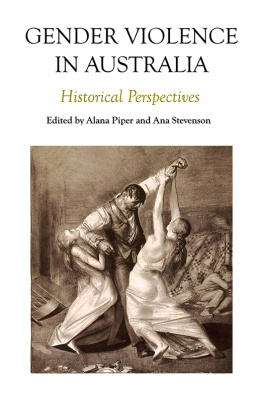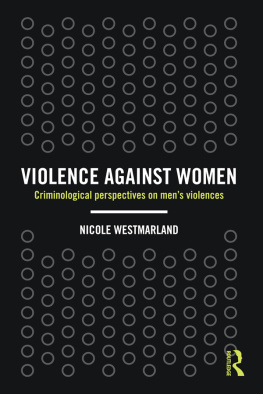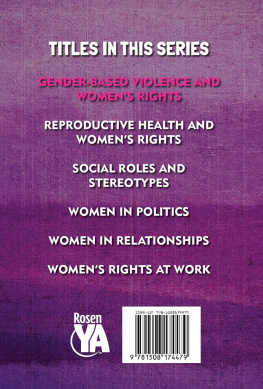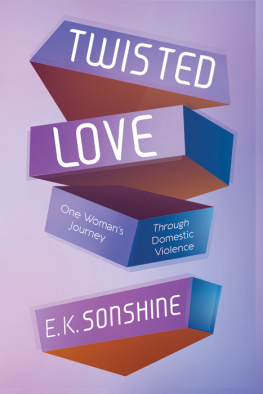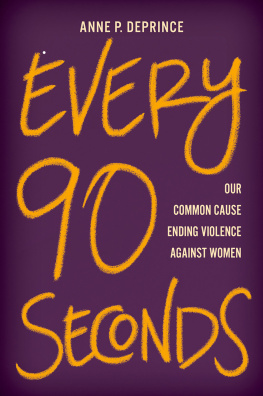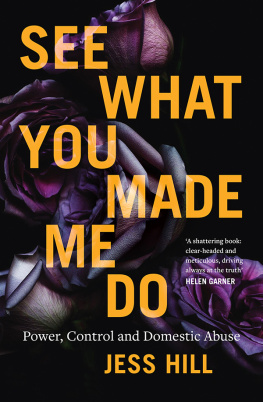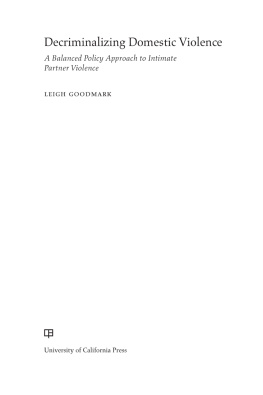
Gender Violence in Australia
Historical Perspectives
Edited by Alana Piper and Ana Stevenson

ABOUT THIS BOOK
In 2015, the Australian federal government proclaimed that violence against women had become a national crisis. Despite widespread social and economic advances in the status of women since the 1970s, including growing awareness and action around gender violence, its prevalence remains alarming. A third of all women in Australia have been assaulted physically; a fifth of all women have been assaulted sexually. Intimate partner violence is significantly more prevalent in Australia than in Western Europe or North America. One woman each week is murdered by an intimate partner, and recent research suggests that nearly forty per cent of all women who suicide have a history of domestic or family violence. Domestic violence is a precipitating factor in a third of all homelessness. The resulting strain on government services and lost productivity means that family violence has been estimated as costing the Australian economy around $13.6 billion a year. The histories presented in this collection indicate exactly where these violent behaviours come from and how they have been rationalised over time, offering an important resource for addressing what amounts to a widespread, persistent, and urgent social problem.
COPYRIGHT AND IMPRINT INFORMATION
Gender Violence in Australia: Historical Perspectives
Copyright 2019
Copyright of this collection in its entirety is held by the editors, Alana Piper and Ana Stevenson. Copyright of the individual chapters is held by the respective author/s.
All rights reserved. Apart from any uses permitted by Australias Copyright Act 1968, no part of this book may be reproduced by any process without prior written permission from the copyright owners. Inquiries should be directed to the publisher.
Monash University Publishing
Matheson Library Annexe
40 Exhibition Walk
Monash University
Clayton, Victoria 3800, Australia
www.publishing.monash.edu
Monash University Publishing brings to the world publications which advance the best traditions of humane and enlightened thought.
Monash University Publishing titles pass through a rigorous process of independent peer review.
ISBN: 9781925835304 (pb)
ISBN: 9781925835311 (pdf )
ISBN: 9781925835328 (epub)
www.publishing.monash.edu/books/gva-9781925835304.html
Series: Australian History
Series editor: Sean Scalmer
Design: Les Thomas
Cover image: The Drunk. Lithograph by George Bellows, circa 1923.
Image courtesy of the US Library of Congress.
A catalogue record for this book is available from the National Library of Australia.
CONTENTS
Alana Piper and Ana Stevenson
Zora Simic
Tanya Evans
Alana Piper
Lisa Durnian
Andy Kaladelfos
Lisa Featherstone
Liz Conor
Rae Frances
Shurlee Swain
Rebecca Jennings
Tanya Fitzgerald
Ana Stevenson and Brigitte Lewis
Mary Tomsic
Jacqui Theobald and Suellen Murray
INTRODUCTION
Challenging gender violence
Alana Piper and Ana Stevenson
In 2015, the Australian federal government proclaimed that violence against women had become a national crisis.
Australia likewise has one of the highest reported rates of sexual violence in the world, with the region only surpassed by some areas of sub-Saharan Africa.
These experiences are by no means limited to women. Men, while at far less risk, can also be victims of family or sexual violence, with their abusers often other men.
Gender violence thus seems to have reached a particularly significant historical moment in Australia. At the same time, violence against women has been declared a timeless and universal phenomenon.
High-profile news stories about female crime victims likewise highlight larger patterns about gender violence. But rarely does such commentary reveal the relationships between the present moment and the broader historical and cultural context connections that would demonstrate how such cases are not mere outliers. The disappearance of 29-year-old Jill Meagher in 2012 led to an outpouring of grief, but also frustration. Her death at the hands of a stranger led the media to characterise her ill fate as random.
Meagher, a married cisgender white woman, attracted an outpouring of public empathy in part because she personified a type of ideal victim. In contrast, the media often characterises women of colour, migrant women, and the LGBTQIA+ community as culpable for their own victimisation. The 2014 murder of Mayang Prasetyo by husband Marcus Wolke was a case in point. Brisbanes Courier Mail quickly sensationalised the tragedy by focusing on certain facts about the victims life and death: first, that the horrific murder involved Wolke cooking Prasetyos dismembered remains; and second, that the 27-year-old was Balinese, a transgender woman, and a former sex worker.
Other recent cases further illustrate the interlocking abuses of the heteropatriarchal colonial State over racialised and gendered bodies. One particularly arresting case was that of Ms. Dhu, a Yamatji woman from regional Western Australia. In August 2014, after calling the police for help over her partners violation of an apprehended domestic violence order, Ms. Dhu was herself arrested for fine default. Upon her incarceration, the 22-year-old had broken ribs and developing cases of septicaemia and pneumonia. Days later Ms. Dhu died; assuming her to be experiencing drug-related withdrawal symptoms, police and health professionals failed to properly attend to her medical needs. The CCTV footage which illustrated the extent of this neglect was shown repeatedly during the resulting coronial inquest; her familys request for it to be made public so as to reveal the depth of her suffering was refused.
As Gender Violence in Australia repeatedly demonstrates, connections between different types of violence frequently illustrate the complex underpinnings of gender violence. Ms. Dhu, a victim of domestic violence in one circumstance, was callously rendered a victim of state violence in another. Such patterns are a direct challenge to the idea that Australia has arrived at a particular moment of crisis that appeared out of nowhere. The histories presented in this collection indicate exactly where these violent behaviours come from and how they have been rationalised over time, to the detriment of women, children and men themselves.
This is why it is so troubling when the more innocuous instances of misogyny problematised by feminists are derided for detracting energy from more serious issues, or dismissed as the hysteria of a minority of easily-offended individuals who should be glad they are not living in more oppressive nations, or a hundred years ago. There is a failure to recognise that historical gains against gender violence in Australia have only occurred because of the willingness of some to stand against community complacency. There is also a failure to recognise that violent behaviours on this continuum are ultimately rooted in the same racist, heteropatriarchal cultural legacies. By undervaluing the socially constructed nature of gendered relations, ahistorical understandings of gender violence insinuate that society should resign itself to some level of gender violence as part of the human condition. How then, this collection asks, can histories of violence transform contemporary perceptions of gender violence in Australia?
Next page
